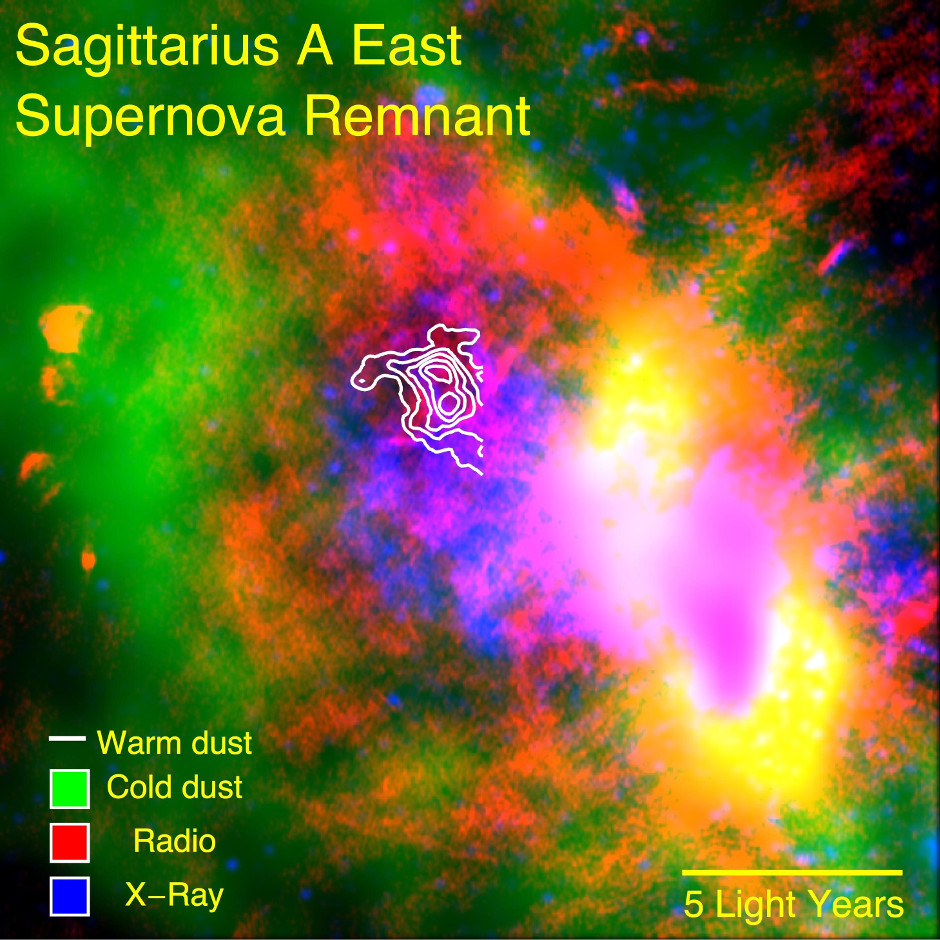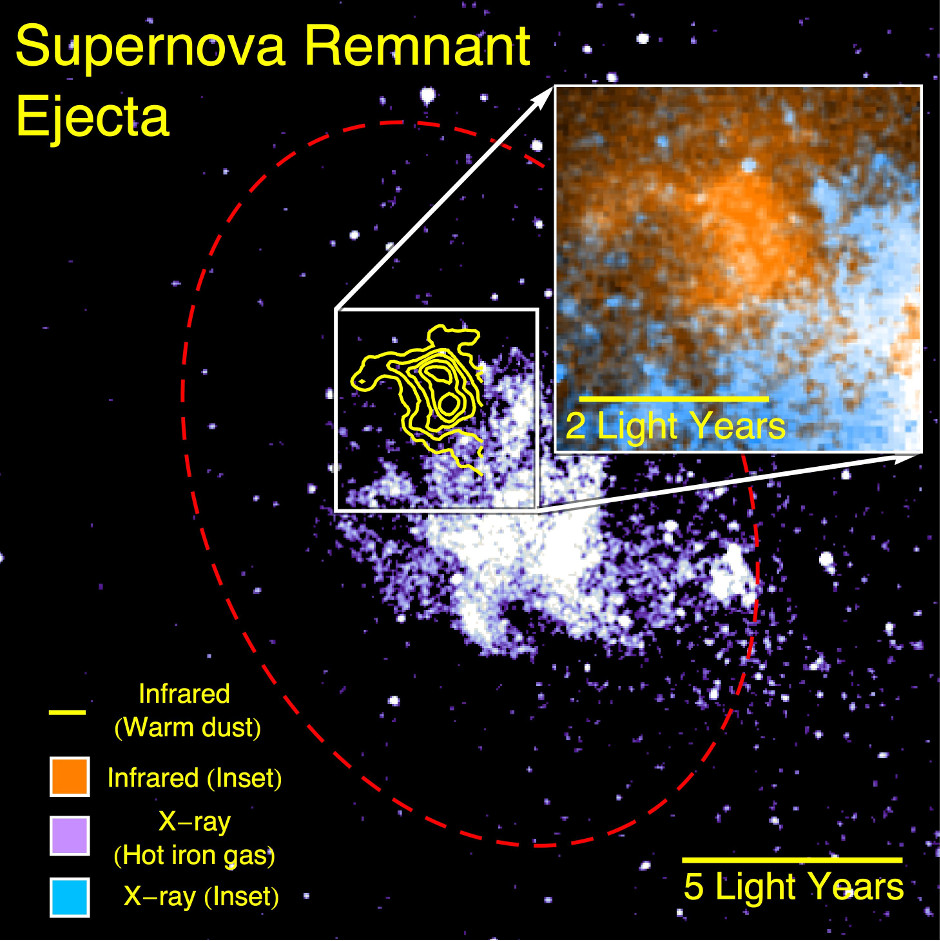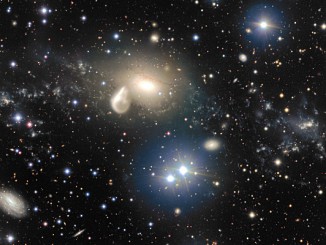
These findings were published in the March 19th online issue of Science magazine.
“Our observations reveal a particular cloud produced by a supernova explosion 10,000 years ago contains enough dust to make 7,000 Earths,” said Ryan Lau of Cornell University in Ithaca, New York.
The research team, headed by Lau, used SOFIA’s airborne telescope and the Faint Object InfraRed Camera for the SOFIA Telescope, FORCAST, to take detailed infrared images of an interstellar dust cloud known as supernova remnant Sagittarius A East, or SNR Sgr A East.
The team used SOFIA data to estimate the total mass of dust in the cloud from the intensity of its emission. The investigation required measurements at long infrared wavelengths in order to peer through intervening interstellar clouds and detect the radiation emitted by the supernova dust.

“The dust survived the later onslaught of shock waves from the supernova explosion, and is now flowing into the interstellar medium where it can become part of the ‘seed material’ for new stars and planets,” Lau explained.
These results also reveal the possibility that the vast amount of dust observed in distant young galaxies may have been made by supernova explosions of early massive stars, as no other known mechanism could have produced nearly as much dust.
“This discovery is a special feather in the cap for SOFIA, demonstrating how observations made within our own Milky Way galaxy can bear directly on our understanding of the evolution of galaxies billions of light-years away,” said Pamela Marcum, a SOFIA project scientist at Ames Research Center in Moffett Field, California.



